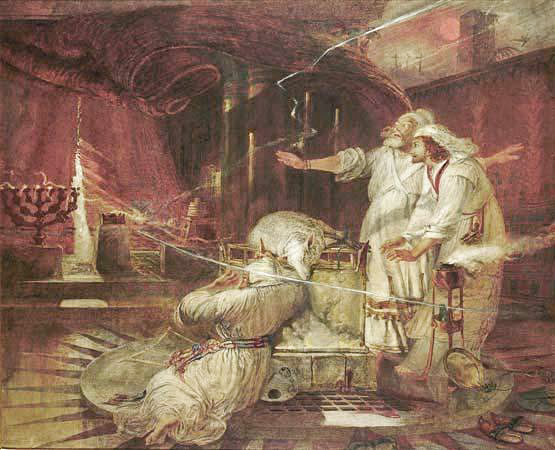
During Lent, many parishes cover their crucifix, images and statues with veils. While a curious custom, shadowing the sacred in God’s dwelling is ancient.
In the Book of Exodus, God gives Moses the stone tablets on which He had written the rules for their society. God then asks that a tabernacle, or tent be built in which the stone tablets can be preserved.
The inner room of the tabernacle in which the tablets would rest was to be veiled off from where the people would gather. The veil was to be made of woven violet, purple and scarlet yarn mixed with fine linen and display embroidered cherubim, God’s heavenly attendants.
Today, anything hidden seems strange. Why should God’s presence be hidden? It is consistent with His fundamental characteristic in the Scriptures: His holiness, or complete other-ness from the world and humanity.
The veil was meant to show that God’s holiness is absolute and that no irreverence or carelessness can enter into His presence. Israelite fear and disobedience in the desert created a distance from God.
The Passion of Christ, however, changed that. Matthew 27 says that when Jesus died, the veil in the temple was torn in half from top to bottom. Those familiar with the temple would have reasonably believed only God could have torn it since the veil was over 60 feet tall, 30 feet wide and 4 inches thick!
Jesus’ Passion — His suffering and death — tore the temple veil. The Christian custom of veiling crucifixes while His Passion was liturgically commemorated served as a visible reminder to all. It was too perfect that in His suffering and death, God’s servant was clothed in violet-purple clothes, turned scarlet by His blood, and then buried in a linen cloth — the very colors and material of the tabernacle veil.
Until 1970, what we call the fifth Sunday of Lent was the first Sunday of the Lord’s Passion. The Gospels from then onward detailed the increasing tension between Jesus and the religious authorities.
John’s Gospel says that after the start of this friction, Jesus went into hiding. Likewise, His divinity was briefly hidden during His suffering and death. It became custom, then, to veil the main church crucifix until its solemn unveiling on Good Friday, just after the proclamation of Jesus’ Passion and death, when the temple veil was miraculously torn.
All other images and statues, save the Stations of the Cross, were veiled during “Passiontide” until the Gloria was sung at the Easter Vigil since, until the Lord is risen, His servants — the saints — hid themselves.
To modern eyes, anything hidden to encourage personal modesty or deeper devotion is suspect. Pride wants to see what it wants when it wants to see it. The mantilla — a veil humbly worn by some women in church — is derided by the more liberated.
Though it conquered Him for a time, human pride can never defeat God. During the liturgical commemoration of human pride’s battle against God, veils call us to deeper modesty.

